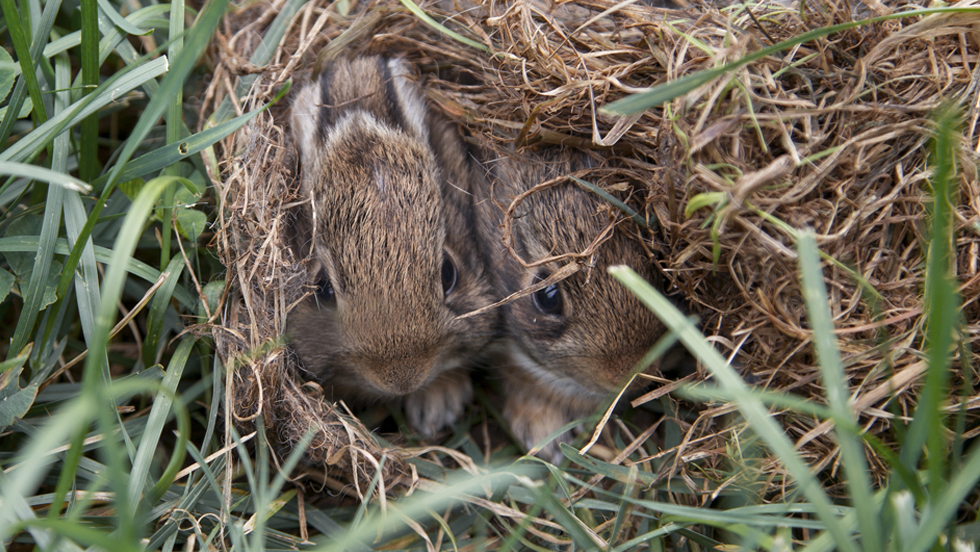
It’s spring, time for our adult and baby bunnies to enjoy warmer weather—and for us to enjoy the happiness they bring us. Bob Conaghan, associate director of facilities, gives us some insights on our furry friends.
Did you know the saying that if you say, “rabbit, rabbit” first thing on the first day of the month, you’ll have a month of good luck? Rabbits have been associated with good fortune the world over for more than 2,000 years. They’re associated with spring and renewal (we’re looking at you, Easter Bunny). At Adelphi, our many campus rabbits are beloved members of our community and our unofficial mascots (second to Paws, of course). And while all the rabbits are adorable, the baby bunnies are a “cute overload” for sure.
Bob Conaghan, associate director of facilities, has been keeping track of Adelphi’s rabbits for the 44 years he has worked in grounds.
He said there is a stable population of 200–300 eastern cottontail rabbits who live on campus. Native to North America and wide-ranging along the entire East Coast, the cottontails are easily recognizable by their reddish or grayish brown fur, large feet, white bellies and fluffy white tails.
Adults weigh up to three pounds and, for the most part, they live underground and can have a lifespan of up to four years.
We may be tempted to try to catch and adopt a bunny, but the eastern cottontail is not domesticated and would never make a good pet.
Sunrise, Sunset and Yellow Flowers
Eastern cottontails are crepuscular, meaning, “You’ll see them early in the morning, right around sunrise and right before sunset,” said Conaghan, adding that they often congregate around the campus flagpole.
The Adelphi cottontails love to eat yellow flowers—and flower bulbs. “We plant 5,000 bulbs a year, and it’s okay if we lose 1,000,” he stated. And with the grounds crew’s organic, no pesticide program, the rabbits have no danger of being harmed by toxic pesticides.
Nature’s Way
Rabbits are known for their fertility. The population stays relatively stable by letting nature take its course. “Their worst enemies are dogs, cats and hawks,” noted Conaghan. “We’ve seen red-tailed hawks swoop down and grab baby bunnies. But more mature rabbits move quickly in a zigzag pattern to escape predators on the ground.”
The rabbits freeze in place as a defensive measure and take off once a predator spies them. “They have an unbelievable sense of smell, and twitch their noses to open their smell sensors,” Conaghan explained.
“I appreciate the rabbits. They’ve been at Adelphi as long as we have,” he added. “And who knows, maybe they bring us luck.”